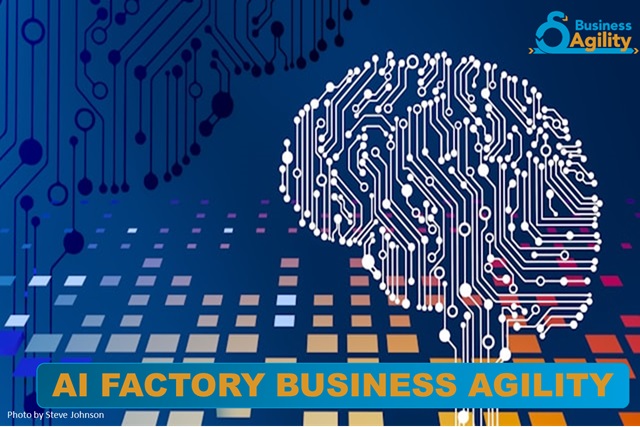Chapter 3: Agile Sales, Account-Based Marketing, and AI-Assisted Selling Practices
In today’s fast-paced sales environment, combining Agile Sales with Account-Based Marketing (ABM) and AI-assisted selling practices is key to building a more dynamic and customer-centric sales approach. As technology and consumer needs rapidly evolve, sales teams must stay adaptable, data-driven, and customer-focused to remain competitive.
Learning Objectives
- Understand the principles of Agile Sales and how they can transform traditional sales practices.
- Learn how to implement AI-assisted selling to enhance decision-making, efficiency, and customer engagement.
- Explore the integration of Agile Sales with AI technologies for a more dynamic and customer-centric sales approach.
- Identify the benefits of iterative sales strategies and continuous improvement in the sales process.
- Recognize the ethical considerations and future trends associated with AI in sales.
What Is Agile Sales?
Agile Sales is an adaptive and iterative approach that applies principles from Agile methodology, originally developed for software, to sales teams. This flexible approach emphasizes continuous feedback, customer collaboration, and the ability to adapt to changing market conditions. Agile Sales helps teams stay responsive and customer-centric, aligning their strategies with real-time feedback to improve performance.
By implementing Agile Sales, companies can break down their sales processes into smaller, manageable steps and continuously refine their tactics based on customer needs and market trends.
Key Agile Sales Practices:
- Iterative and Incremental Sales Strategy: Agile Sales divides large sales initiatives into smaller, iterative efforts. This allows teams to gather feedback, test ideas, and make necessary adjustments before a broader rollout.
- Example: A software company pilots a new product launch with a small group of users. After gathering feedback, the sales team refines its strategy for a wider launch, ensuring a smooth product introduction.
- Sales Refactoring: Refactoring is about continuously revisiting and refining sales processes to improve efficiency and effectiveness.
- Example: An insurance company regularly reviews its lead generation processes, eliminating bottlenecks and redundancies to improve conversion rates.
- Test-Driven Sales Initiatives (TDSI): Testing strategies on a small scale before a full launch reduces risks and enables quick adjustments.
- Example: A pharmaceutical company tests a sales approach in a specific region before launching nationwide, refining the pitch based on early feedback.
- Just-In-Time (JIT) Sales Enablement: Providing resources and training just when sales teams need them ensures relevance and minimizes information overload.
- Example: Before a product launch, a medical device company delivers fresh training to its sales team, allowing them to approach client meetings with updated knowledge.
The Role of Account-Based Marketing (ABM) in Agile Sales
Account-Based Marketing (ABM) focuses on treating each high-value customer as a unique market. Rather than adopting broad, generalized sales strategies, ABM targets specific accounts with highly personalized solutions. This is where ABM aligns closely with Agile Sales principles like customer collaboration and feedback loops.
ABM and Agile Sales Synergy:
- Personalization at Scale: ABM allows sales teams to focus on creating highly tailored solutions for key accounts. This personalized approach aligns with Agile’s principle of continuous improvement.
- Iterative Process: In Agile Sales, strategies are adjusted continuously based on real-time feedback. This iterative process is crucial for ABM, where the success of personalized campaigns often depends on refining messaging and engagement tactics based on the client’s responses.
Examples of ABM in Agile Sales:
- Software Company: A B2B software company targets a select group of high-value accounts, collaborating with marketing to design personalized campaigns. Feedback is collected and used to refine strategies iteratively, ensuring continuous improvement.
- Manufacturing Firm: A manufacturing sales team assigns account managers to key clients and adjusts product offerings and marketing strategies based on real-time customer feedback.
AI-Assisted Selling: Enhancing Agile Sales
AI-assisted selling integrates artificial intelligence tools with sales processes, providing valuable insights, automating tasks, and enabling a more efficient and personalized sales approach. AI’s ability to analyze vast amounts of data complements Agile Sales practices by allowing teams to make informed, data-driven decisions in real-time.
Key AI-Assisted Selling Practices:
- Data-Driven Decision Making: AI tools analyze customer data to identify patterns and trends, helping sales teams prioritize leads and personalize outreach efforts.
- Example: An AI tool analyzes customer interaction data to suggest the best times for follow-up, increasing engagement rates.
- Automation for Efficiency: AI tools can automate repetitive tasks, freeing up salespeople to focus on high-value activities like building relationships and closing deals.
- Example: A real estate firm uses AI to automate its lead follow-up process, sending personalized emails based on customer behavior.
- Ethical Considerations: With AI becoming more integrated into sales processes, ethical considerations such as transparency and data privacy must be addressed. Companies need to ensure that AI decisions are transparent and that customer data is used responsibly.
- Example: A company using AI to segment customers ensures that data is anonymized and customers are informed about how their information is being used.
- Future Trends in AI and Sales: The future of AI in sales will involve even more sophisticated tools that can predict market trends, automate complex tasks, and provide deeper insights into customer behavior.
- Example: A sales team uses AI to predict upcoming market shifts, adjusting their strategy months in advance to stay ahead of competitors.
Continuous Improvement Through Agile and AI
The combination of Agile Sales, ABM, and AI-assisted selling practices creates a powerful framework for continuous improvement. By focusing on adaptability, customer feedback, and data-driven decision-making, sales teams can stay responsive and competitive in a rapidly evolving market. Agile Sales encourages flexibility and collaboration, while AI tools enhance efficiency and provide insights to optimize strategies.
Conclusion
Agile Sales practices, when combined with ABM and AI-assisted selling, allow sales teams to be more adaptable, customer-focused, and data-driven. Together, these practices enhance decision-making, improve efficiency, and create a more personalized sales approach. As AI technology continues to evolve, sales teams that embrace these tools will be better positioned to adapt and succeed in a competitive market.










